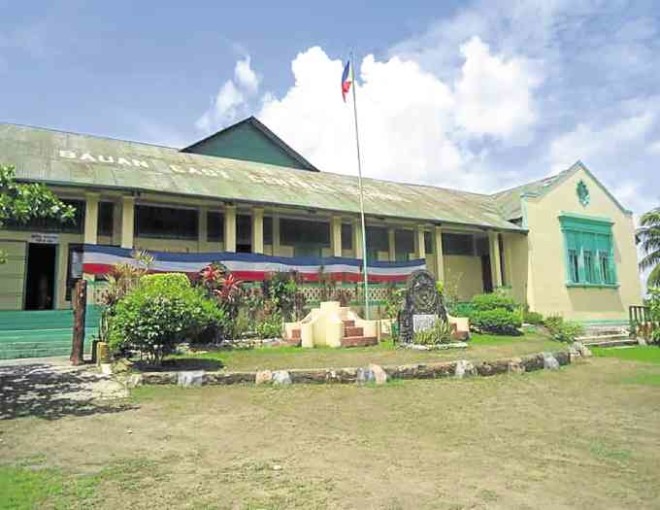
FIVE years after the Bauan local government of Batangas was stopped by heritage advocates for its plan to demolish the American-era Gabaldon building of Bauan East Central School in exchange for a transport terminal, the structure, a presumed important cultural property under the National Cultural Heritage Act of 2009, is again under threat.
This is so because Herminigildo Dolor has replaced his son Ryanh Dolor as mayor. It was the elder Dolor who originated the idea in 1998, which was carried over to his son’s term starting in 2007. In 2011, because of loud opposition, the young Dolor shelved the plan.
Ryanh Dolor’s name has been included in the list of drug traffickers in the antidrug campaign of the Philippine National Police under the new administration of President Duterte. He denied he had been involved in drugs.
Heritage advocate Bong Macalalad said the demolition of the American-era Bauan East Central School (Becs) was a campaign promise of the elder Dolor in the last election.
He added that the town hall under the administration of the Dolors had sold the land where the school is standing to Conmet, the developer of a hotel that is being constructed on the site of the old plaza that in itself had been demolished under the Dolor administration.
Macalalad, who started an online petition recently against the demolition, said the planned central transport terminal was not a clear solution to decongest traffic. In any case, he said it would be better to construct it outside of the busy town center.
Macalalad said the mayor had made pronouncements that once the three-story building at Bauan Technical High School was constructed, students from Becs would be transferred there and the old school would be torn down.
“It makes sense to preserve something of heritage value, this school being the last one standing after the Dolors demolished the old municipio and decimated original plaza,” Macalalad said.
Macalalad was referring to the art deco municipal hall constructed in 1930 and attributed to the famed architect Juan Arellano. The old town plaza was destroyed to make way for the construction of a hotel building, he added.
“I was a frequent visitor in the old municipio,” Macalalad said. “I really feel bad that something so majestic, historical and symbolic of the greatness of Bauan in the past has been lost just because some uncaring and careless politician wanted an edifice for himself, even to the point of attempting to rewrite Bauan’s history.”
Becs alumnus Fr. Nonie Dolor condemned the planned demolition. “It pains me to see my school which has produced the great names of our town [may be] demolished,” he explained. He called the building “a historical landmark.”
Filipino-inspired designs
In his master’s thesis on cultural heritage studies at the University of Santo Tomas Graduate School in 2013 entitled, “Developing a Practical Guide for the Conservation and Maintenance of Gabaldon Buildings in the Philippines,” architect Melvin Patawaran explained that the Gabaldon school buildings were named after Nueva Ecija assemblyman Isauro Gabaldon of the Philippine Assembly during the American colonial era who authored a law allotting one million pesos in 1907 for the construction of more than 500 school buildings in the country based on more than 10 designs by renowned architect William Parsons.
Parson’s works included the Army Navy Club, which has been demolished to make way for a hotel and casino; Elks Club, now Museo Pambata; Philippine General Hospital; the iconic Manila Hotel; and government buildings in other parts of the country.
Patawaran noted that the Gabaldon buildings’ tropical designs were adaptive of the environment, through the wide awning windows, high ceilings, calado (fretwork) and raised flooring which allows the circulation of air for proper ventilation.
The capiz awning windows also gave a nonglaring effect inside while the raised flooring allowed the buildingst to sway in the event of an earthquake while functioning as a protection against termites.
Patawaran concluded that the Parson designs drew from Filipino conditions since they incorporated the basic design of the “bahay kubo.”
Patawaran said culturally significant buildings such as the Gabaldon schoolhouses “enrich people’s lives, providing a deep and inspirational sense of connection to the community, past experiences and history,” which are “irreplaceable.” They, therefore, “must be conserved for the present and future generations.”